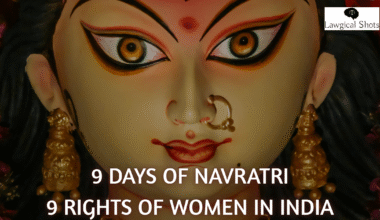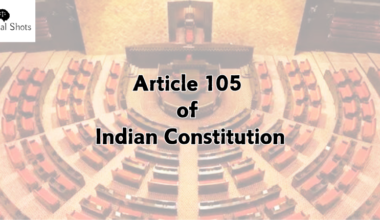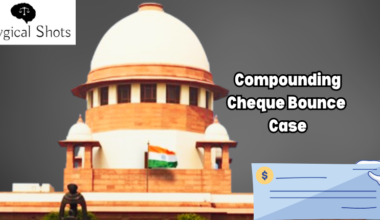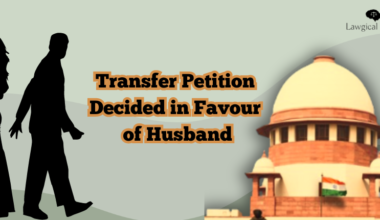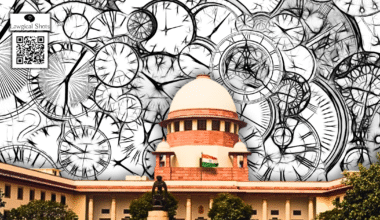A wife is a rightful person for all the affection and companionship of her husband. But what happens when all that affection is diverted to another woman? Can the wife seek damages from the Court for the active and malafide conduct of another woman? In the very case we are going to discuss hereunder, that’s what happened. To everyone’s surprise, the Bench of Justice Purushaindra Kumar Kaurav on September 15, 2025 passed an ORDER which awakened a new facet of laws for extramarital affairs. Let’s explore the bits and pieces of expanding law on civil damages for alienation of affection in India.
Factual Background
As discussed earlier, when a woman gets married, she is entitled to her husband’s company for the rest of her life. Through joys and sorrows, husband and wife are supposed to stand by each other’s side. However, if the husband withdraws his affection and companionship from his wife, due to alleged active and malafide conduct of another woman, that’s an emotional toll.
The couple got married in 2012, blessed with twins in 2018. Both worked for family business, and the husband also had an independent venture. The defendant joined the venture in 2021, allegedly aware of the marriage of the plaintiff. As alleged by the wife, this woman still developed a close and personal relationship with her husband. With frequent visits to her matrimonial home, being the exclusive travel companion of her husband during work trips. A few overheard intimate remarks and letters exchanged between the two confirmed the extramarital affair to the wife. The wife alleged that it was intentional interference with her marital relationship.
Upon confrontation, the said woman refused to end the relationship, and the husband started openly appearing with her in social gatherings, humiliating his wife. The husband filed for divorce in April 2025 and the wife brought the instant suit for civil damages for alienation of affection.
Interesting Arguments on Legality of Extramarital Affairs
Since it was a civil suit for alienation of affection in India, the husband’s advocate ousted the High Court’s jurisdiction stating it was a dispute arising out of a marital relationship. Thus, the matter should be decided along with divorce proceedings in Family Court. They further discussed the autonomy of consenting adults and the non-interference of the State in private matters. The advocate for another woman stated that she owed no legal duty to refrain from interacting with the husband of plaintiff wife.
On the other hand, arguments for wife reflected upon her being a victim of tort of alienation of affection. That was based on damages suffered due to alleged overt acts of this woman which led to withdrawal of affection and companionship of her husband.
Court’s Analysis on Damages for Alienation of Affection in India
‘Heart Balm’ Tort
The Delhi High Court admitted that at present, there was no law for civil damages for alienation of affection in India, not even as a tort of AoA. The Court found its foundation in the ‘heart balm’ torts under the Anglo-American Common Law. It is a civil claim allowing one party to seek monetary compensation for termination or disruption of a romantic or marital relationship. The same includes seduction, criminal conversation, AoA, and breach of a promise to marry.
Supreme Court’s Views on AoA
The Court referred to the Supreme Court decision in Pinakin Mahipatray Rawal v. State of Gujarat (2013) wherein the Apex Court discussed alienation of affection. The Court found that if proved against a stranger, AoA becomes an intentional tort of interfering with a marital relationship drawing one spouse away from another. It scanned the Anglo-Saxon origin and history of deterring wrongful interference to protect the institution of marriage. In fact, the Apex Court took the opportunity to recognize the aspects of intimacy, companionship, support, duties, affection, and the welfare of children as a valuable interest in a marital relationship. The Court emphasised upon strict evidentiary standards to elude a mere association or acquaintance but active and wrongful interference calculated to entice a spouse. In addition, independently developed affection by a married spouse without any third party act was not actionable.
In another case of Indra Sarma v. VKV Sarma (2013), the Supreme Court had similar views regarding a woman knowingly entering a relationship with a married man. The Apex Court thereby reaffirmed that alienation of affection constitutes intentional tort.
The Delhi High Court summed that even in India, theory suggests that a spouse could maintain an action against a third party who maliciously induces the other spouse to withdraw affection. Thus, the concept remains “judicially acknowledged, but not formally adopted” as explained by the High Court. The Court even looked at various decisions of the High Court to trace the legal picture and scope of civil damages for alienation of affection in India. However, no Court gave relief in a civil suit for damages, but proceedings concerning domestic violence, adultery, or related criminal matters. The substantive law or remedies to support a civil suit for damages in AoA lacks evolution.
Alienation of Affection Across the Globe
Looking at the global picture, the High Court noted that as of 2016 in United States, Hawaii, Mississippi, New Mexico, North Carolina, South Dakota, and Utah are a handful of jurisdictions wherein an affected spouse can sue the paramour or the third party who willfully impaired the marriage. The aggrieved spouse in such cases needs to prove the existence of love, loss of affection, and third party’s malicious conduct leading to such loss.
In England and Wales, the Courts do not recognize action against interference with marriage, since the law focuses upon settlements and divorce, as against punishing extramarital liaisons.
The High Court also pointed at unequivocal rejection of suit for civil damages for alienation of affection in Canada.
English Influence on Indian Laws
The High Court traced the impact since India often follows English common law, particularly for tort cases. However, the Court clarified that English common law and enactments may be referred for guidance, while binding force comes from Indian statutes and judicial precedents. Indian Courts are free to evolve specific principles as found suitable to Indian conditions.
Injury Caused by Third Party
Pressing upon the question of summons in instant case for AoA, the Court sought after the plaintiff wife to prove that she suffered injury as allegedly caused by the third party, causing a tort. The Court even required the defendants to prove express bar under CPC Section 9 or any other provision to specifically bar institution of such a suit, for the claim for AoA tort to be outrightly rejected. Regarding the issue of non-joinder or misjoinder of necessary parties, the Court declared it a curable defect not being a ground for rejection of plaint or to deny issuance of summons.
Commenting upon third party’s question of duty towards a marriage, the Court expressed that “If a spouse is held to possess a protectable interest in marital consortium, intimacy, and companionship, the correlative legal duty would be that any third party must not intentionally and wrongfully interfere with that relationship by acts calculated to alienate the affection of a spouse to the other spouse, which the other spouse is legally entitled to……At the same time, a spouse retains the inherent liberty to make personal choices. Where the conduct of a spouse is completely voluntary, not induced and uncoerced, that exercise of such liberty of one spouse will defeat third-party liability.”
After aforementioned discussion, the Court found a civil action for wrongful interference sustainable provided that the plaintiff can establish the following:
- Defendant’s intentional and wrongful conduct directed at alienating the plaintiff’s marital relationship;
- Clear causation linking the defendant’s conduct to a legally cognisable injury to the plaintiff; and
- The loss claimed to be susceptible to rational assessment.
Civil Court Jurisdiction in Marital Alienation of Affection
Highlighting the arguments for jurisdiction to Family Courts, the Court looked at relatable cases of Supreme Court. It concluded that in the instant case, the intentional and wrongful interference of third party leading to loss of companionship between a husband and wife was not pleaded as an incidental outcome of marriage, but an actionable civil injury arising from independent tortious conduct. The Court also clarified that pendency of divorce proceedings before Family Court does not bar institution of a distinct suit for civil damages for alienation of affection in the instant case.
State’s Intrusion of Individual Privacy
The defendants raised questions against the State’s intrusion of the private sphere of an individual’s life and choices. The Court upheld personal autonomy and also stated that if the husband is found to have acted on his own volition, there would be no action against the third party. However, the High Court clarified that the said question could not be determined at the preliminary stage but established through evidence.
However, the Court explained that marriage being a civil union accompanies the norm of exclusivity in intimate sphere between spouses. The Court discussed various matrimonial laws for divorce and highlighted the expectation of sexual exclusivity in a marriage. However, the wife here had no case against the husband but another woman’s interference in the marital relationship which contributed to the breakdown of their marriage. While none of the matrimonial laws extend a remedy for action against a third party, a civil action cannot be excluded as per the Delhi High Court.
While eyeing certain expectations from the sanctity of marriage, the High Court acknowledged that personal liberty of a spouse is not a criminal offence and cannot attract penal sanction. However, the law of tort recognizes compensation for breach of matrimonial bond. The Delhi High Court even expressed that “the cause of action is independent of the marital tie and is premised on the tortious interference of a third party with the plaintiff’s legally recognised relationship.”
Conclusion
The High Court found a prima facie case maintainable for issuing summons to a third party for civil damages for alienation of affection in India. However, the same was not decided on merits but subject to evidence to be produced by the parties to prove their stance before the Court.
The instant Delhi High Court order allowing alienation of affection as an actionable cause opens a rare scope for litigation in extramarital affairs in India.

